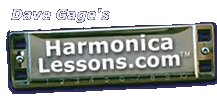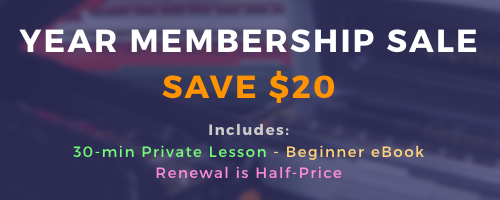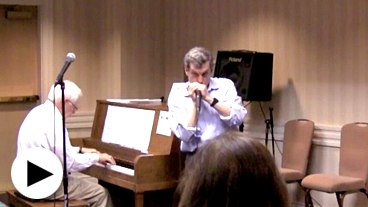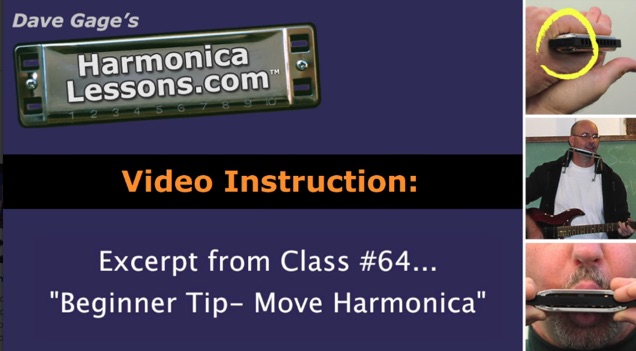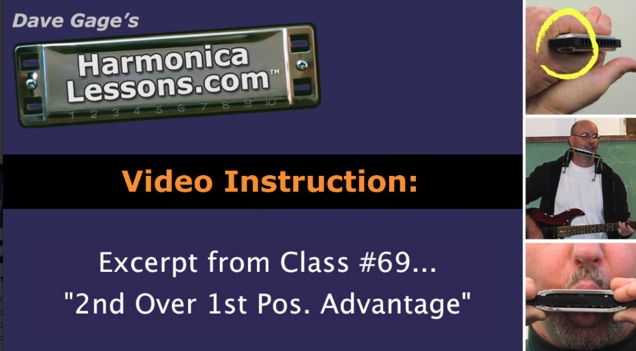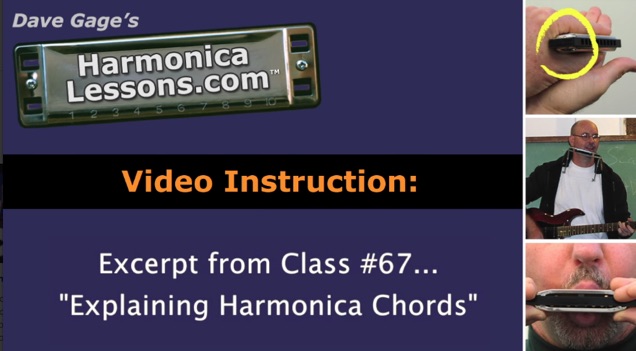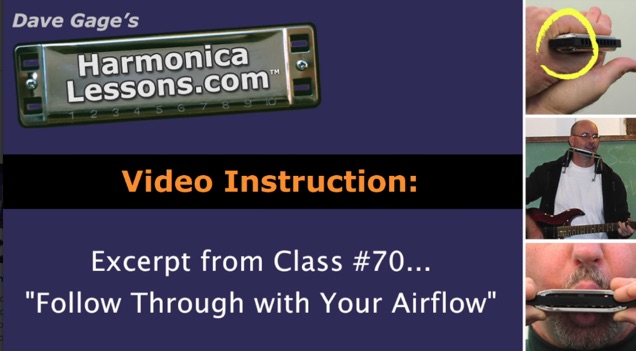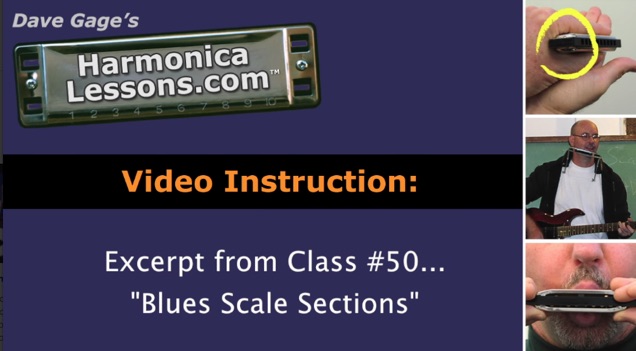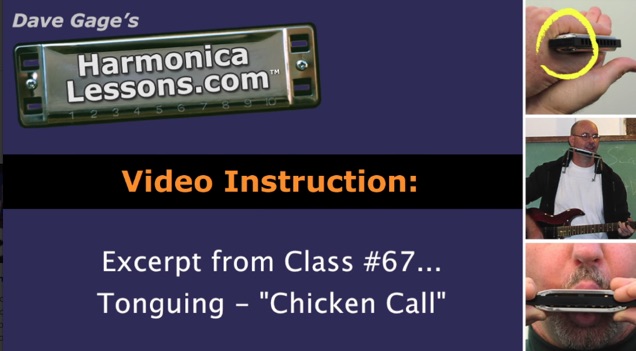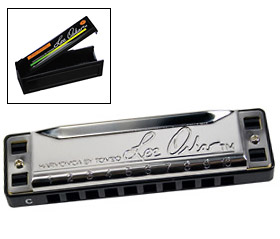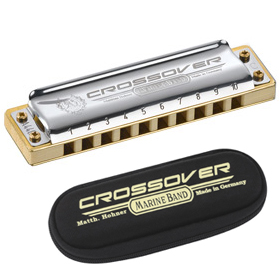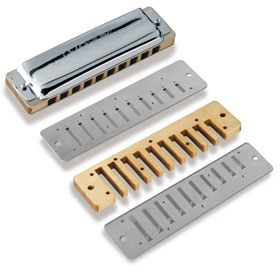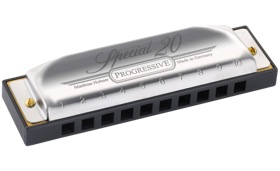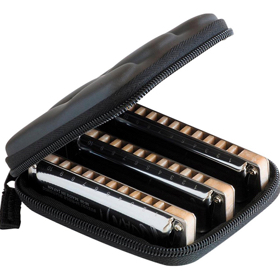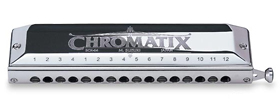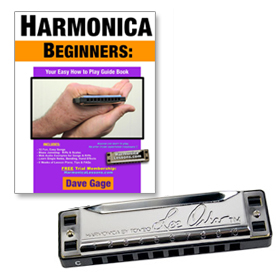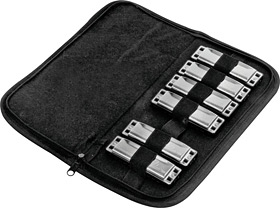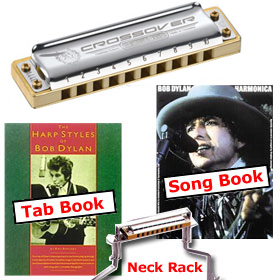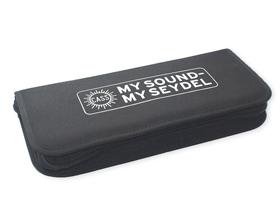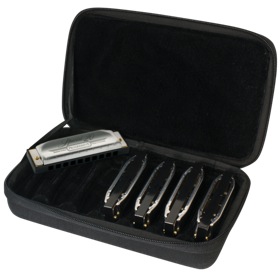"Ragtime Harmonica"
Ragtime is a precursor to jazz, popular in the early part of the 1900's. It is very melodic, thus at first glance, it would seem ideal for a chromatic harmonica. However, it can be played with a bit of a jazzy or bluesy feel, and the diatonic harmonica is the ideal instrument for this. The diatonic harmonica does though require a tuning modification as discussed below.
"Ragtime Harmonica Music"
by Marc Silverstein
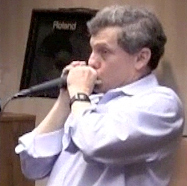
1st and 2nd Position Theory
When a harmonica is played in "1st Position" (also called "straight harp"), it is played in the key of the harmonica label. For example, a "C" harmonica played in 1st Position would be played in the musical key of "C". This is often not a very useful position on the harmonica, as it is missing some of the sharps and flats that are necessary for many melodies. In addition, since there are no musically useful bent notes, the music can sound sterile.
The vast majority of blues harmonica is played in "2nd Position" (also called "crossharp"). This means the key of the song is based on an interval of a perfect fifth above the key of the harmonica label. For example, on a "C" diatonic harmonica, I would play it in the key of "G". This allows for bending of important scale tones, which gives a more soulful or bluesy sound. It also gives an altered scale - the seventh tone of the scale is an "F", rather than the "F#" that you would expect in a standard "G" major scale. This "flat seventh" note is very useful and perfect for blues. Unfortunately, the missing "F#" is an important note for playing melodic parts such as found in ragtime music.
What I am looking for is the bluesy feel of playing in 2nd Position, but with more of the melodic flexibility that one might associate with chromatic harmonica.
Harmonica Modification (re-tuning hole 5 Draw)
To increase my melodic flexibility, I tune the hole 5 draw up a half-step from the "F" up to the "F#". This not only gives me the melodic note I need, but I can still bend this reed down to the "F" natural. Thus I gain the "F#" without losing the "F".
I was introduced to this tuning by Dave Gage probably 25 years ago, but didn't start using it until much later. This particular tuning is called the "Country Tuning" by Hohner, and "Melody Maker" by Lee Oskar, and is available commercially. I have always called it "Major Tuned Crossharp", but I'm not sure that any of these names is entirely saftisfactory.
I am currently using the "Hohner Crossover" harmonicas. Unfortunately, they do not come in "Country Tuning", so I have to make my own. Harmonica tuning is accomplished by removing the cover plate and filing down the tip of the reed until the pitch is raised by a half-step. I do this with the help of an electronic tuner.
Even with this modification and my bending, I still do not have a complete chromatic scale on the diatonic. Additional notes could be played with the "overblow" method, but this can thin out the sound, and is not a technique that I use. Thus, I have to be selective about which songs I choose to play, because they do not all work equally well on the diatonic.
Music Notation
When I find a song I want to adapt to harmonica, I like to write out the parts in advance. This helps me to develop new ideas, and keeps me from simply repeating familiar licks. I have never been very comfortable with standard harmonica tabs that shows which hole to play and whether to blow or draw. The main disadvantage of this notation (other than that I can't really read it) is that there is no way to indicate rhythm. For this reason I prefer standard musical notation.
One challenge with the diatonic is that you pick up a different harmonica for every different musical key. It is unnecessarily confusing to have to remember that 2 draw is a "G" on a C harmonica, but that it is "Bb" on an Eb harmonica. My solution is to write all music as if it was being played on a "C" diatonic harmonica. If it is to be played in 1st Position, I write the musical notation in the key of "C". If it is in 2nd Position, I write the musical notation in the key of "G". I make a note on the music which harmonica to use. If I play "2 draw", I always think of it as G (even when it is not), and the choice of the harmonica does the transposition for me.
This same problem (and same solution) occurs with other musical instruments. For example, all saxophones have the same fingering, but they are not all in the same key. To the sax player, closing the first hole with your index finger is a "B", but it will clearly be a different pitch on a "Bb" tenor sax vs an "Eb" alto sax. The music is transposed accordingly so that the saxophone player can always think of this note as a "B".
Harmonica Switching
Almost all ragtime songs start in one musical key, then modulate to a second key. This second key is usually down a perfect fifth (following the "circle of fifths"). Thus if a song starts in "G", it will modulate to "C". Later in the song, it will often modulate back to the original key. Since I play in 2nd Position, a song that starts in "G" and modulates to "C" would require that I start with a "C" harmonica (2nd Position = "G") and then switch to an "F" harmonica (2nd Position = "C").
Software
I use Apple's Logic 9 for writing and recording songs. One of the great advantages of Logic is that it has a fairly flexible module for editing and printing musical scores. In addition to writing the harmonica parts, I can also use it to write piano scores for the piano player.
When I write the harmonica part, I will usually find a recorded piano version of the song, and write my part over this. Unfortunately, most recorded live performances have variable tempos, and do not match the rigid bar lines of computers. To solve this, I import the song into Logic, and use Logic's "beat mapping" function to make the bar lines in Logic match the bar lines of the recorded audio. I can then create a harmonica part in Logic, and play it back to make sure it sounds okay along with the recorded piano part. For fast or technical phrases, I use Logic's "Vari-Speed" function to slow down the audio (without affecting the pitch).
Equipment
As noted above, I am currently using the "Hohner Crossover" harmonicas because they are loud, fast, responsive, and have excellent quality control. However, they can sometimes sound a little too bright. The microphone/amplifier combination is thus critical to getting a good sound. A distorted sound, as is typical in blues, would sound out-of-place in ragtime. I need a relatively clean sound, with some attenuation (lowering) of high frequencies to minimize potential shrillness. I have tried a number of combinations, but I am currently using a Shaker Mad Dog Microphone and a Fishman SA-220 amplifier. The microphone does much of the high frequency attenuation as part of its design. The Fishman amp is designed to be a very clean acoustic amp, and I turn down the treble EQ on this as well. The lack of feedback with this setup is remarkable.
Music
The song choices come from the collection of my piano player, Elliott Adams, who is an accomplished professional and has one of the largest ragtime sheet music collections in the world. Although I will follow the original melody to a certain extent, I try to come up with different or creative lines over the chord changes to take advantage of the unique voice of the harmonica. Although the genre is ragtime, I have lines that are derived from classical music, country, rock and roll, etc. My main influences among harmonica players are Charlie McCoy, Norton Buffalo, and Dave Gage, and you will probably hear these influences as well in my playing.
Marc Silverstein began his musical training at age 4 on the piano. He subsequently trained on clarinet and saxophone. He met Dave Gage in 1981 and joined his beginning harmonica class in 1982. He has played in multiple musical genres, including jazz, classical, and rock and roll. He met ragtime piano player Elliott Adams in 1993, and began working on his harmonica ragtime project. His day job is as a dermatologist in Sacramento, California. Watch Marc's Youtube Videos
When a harmonica is played in "1st Position" (also called "straight harp"), it is played in the key of the harmonica label. For example, a "C" harmonica played in 1st Position would be played in the musical key of "C". This is often not a very useful position on the harmonica, as it is missing some of the sharps and flats that are necessary for many melodies. In addition, since there are no musically useful bent notes, the music can sound sterile.
The vast majority of blues harmonica is played in "2nd Position" (also called "crossharp"). This means the key of the song is based on an interval of a perfect fifth above the key of the harmonica label. For example, on a "C" diatonic harmonica, I would play it in the key of "G". This allows for bending of important scale tones, which gives a more soulful or bluesy sound. It also gives an altered scale - the seventh tone of the scale is an "F", rather than the "F#" that you would expect in a standard "G" major scale. This "flat seventh" note is very useful and perfect for blues. Unfortunately, the missing "F#" is an important note for playing melodic parts such as found in ragtime music.
What I am looking for is the bluesy feel of playing in 2nd Position, but with more of the melodic flexibility that one might associate with chromatic harmonica.
Harmonica Modification (re-tuning hole 5 Draw)
To increase my melodic flexibility, I tune the hole 5 draw up a half-step from the "F" up to the "F#". This not only gives me the melodic note I need, but I can still bend this reed down to the "F" natural. Thus I gain the "F#" without losing the "F".
I was introduced to this tuning by Dave Gage probably 25 years ago, but didn't start using it until much later. This particular tuning is called the "Country Tuning" by Hohner, and "Melody Maker" by Lee Oskar, and is available commercially. I have always called it "Major Tuned Crossharp", but I'm not sure that any of these names is entirely saftisfactory.
I am currently using the "Hohner Crossover" harmonicas. Unfortunately, they do not come in "Country Tuning", so I have to make my own. Harmonica tuning is accomplished by removing the cover plate and filing down the tip of the reed until the pitch is raised by a half-step. I do this with the help of an electronic tuner.
Even with this modification and my bending, I still do not have a complete chromatic scale on the diatonic. Additional notes could be played with the "overblow" method, but this can thin out the sound, and is not a technique that I use. Thus, I have to be selective about which songs I choose to play, because they do not all work equally well on the diatonic.
Music Notation
When I find a song I want to adapt to harmonica, I like to write out the parts in advance. This helps me to develop new ideas, and keeps me from simply repeating familiar licks. I have never been very comfortable with standard harmonica tabs that shows which hole to play and whether to blow or draw. The main disadvantage of this notation (other than that I can't really read it) is that there is no way to indicate rhythm. For this reason I prefer standard musical notation.
One challenge with the diatonic is that you pick up a different harmonica for every different musical key. It is unnecessarily confusing to have to remember that 2 draw is a "G" on a C harmonica, but that it is "Bb" on an Eb harmonica. My solution is to write all music as if it was being played on a "C" diatonic harmonica. If it is to be played in 1st Position, I write the musical notation in the key of "C". If it is in 2nd Position, I write the musical notation in the key of "G". I make a note on the music which harmonica to use. If I play "2 draw", I always think of it as G (even when it is not), and the choice of the harmonica does the transposition for me.
This same problem (and same solution) occurs with other musical instruments. For example, all saxophones have the same fingering, but they are not all in the same key. To the sax player, closing the first hole with your index finger is a "B", but it will clearly be a different pitch on a "Bb" tenor sax vs an "Eb" alto sax. The music is transposed accordingly so that the saxophone player can always think of this note as a "B".
Harmonica Switching
Almost all ragtime songs start in one musical key, then modulate to a second key. This second key is usually down a perfect fifth (following the "circle of fifths"). Thus if a song starts in "G", it will modulate to "C". Later in the song, it will often modulate back to the original key. Since I play in 2nd Position, a song that starts in "G" and modulates to "C" would require that I start with a "C" harmonica (2nd Position = "G") and then switch to an "F" harmonica (2nd Position = "C").
Software
I use Apple's Logic 9 for writing and recording songs. One of the great advantages of Logic is that it has a fairly flexible module for editing and printing musical scores. In addition to writing the harmonica parts, I can also use it to write piano scores for the piano player.
When I write the harmonica part, I will usually find a recorded piano version of the song, and write my part over this. Unfortunately, most recorded live performances have variable tempos, and do not match the rigid bar lines of computers. To solve this, I import the song into Logic, and use Logic's "beat mapping" function to make the bar lines in Logic match the bar lines of the recorded audio. I can then create a harmonica part in Logic, and play it back to make sure it sounds okay along with the recorded piano part. For fast or technical phrases, I use Logic's "Vari-Speed" function to slow down the audio (without affecting the pitch).
Equipment
As noted above, I am currently using the "Hohner Crossover" harmonicas because they are loud, fast, responsive, and have excellent quality control. However, they can sometimes sound a little too bright. The microphone/amplifier combination is thus critical to getting a good sound. A distorted sound, as is typical in blues, would sound out-of-place in ragtime. I need a relatively clean sound, with some attenuation (lowering) of high frequencies to minimize potential shrillness. I have tried a number of combinations, but I am currently using a Shaker Mad Dog Microphone and a Fishman SA-220 amplifier. The microphone does much of the high frequency attenuation as part of its design. The Fishman amp is designed to be a very clean acoustic amp, and I turn down the treble EQ on this as well. The lack of feedback with this setup is remarkable.
Music
The song choices come from the collection of my piano player, Elliott Adams, who is an accomplished professional and has one of the largest ragtime sheet music collections in the world. Although I will follow the original melody to a certain extent, I try to come up with different or creative lines over the chord changes to take advantage of the unique voice of the harmonica. Although the genre is ragtime, I have lines that are derived from classical music, country, rock and roll, etc. My main influences among harmonica players are Charlie McCoy, Norton Buffalo, and Dave Gage, and you will probably hear these influences as well in my playing.
About Marc Silverstein
Marc Silverstein began his musical training at age 4 on the piano. He subsequently trained on clarinet and saxophone. He met Dave Gage in 1981 and joined his beginning harmonica class in 1982. He has played in multiple musical genres, including jazz, classical, and rock and roll. He met ragtime piano player Elliott Adams in 1993, and began working on his harmonica ragtime project. His day job is as a dermatologist in Sacramento, California. Watch Marc's Youtube Videos
